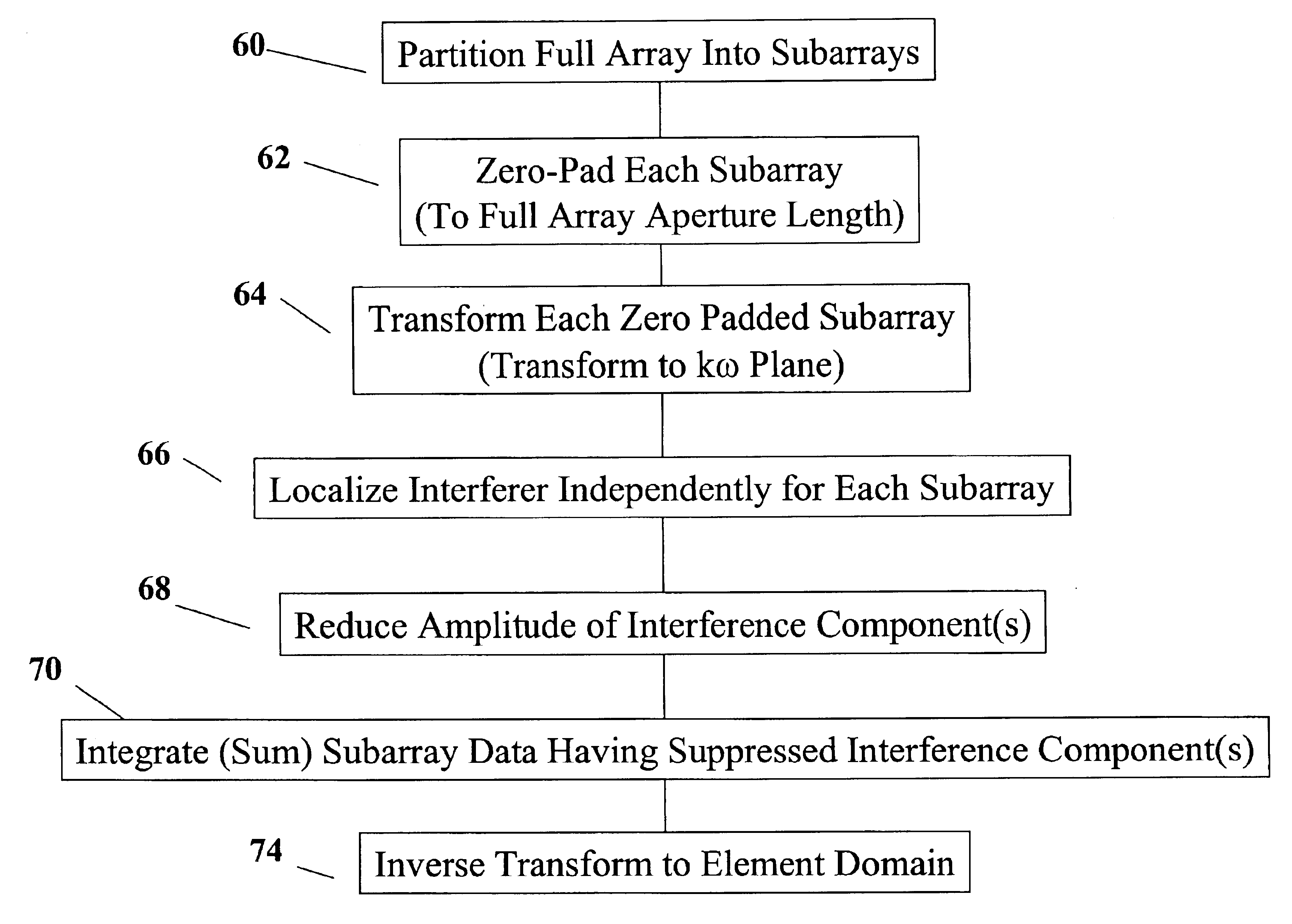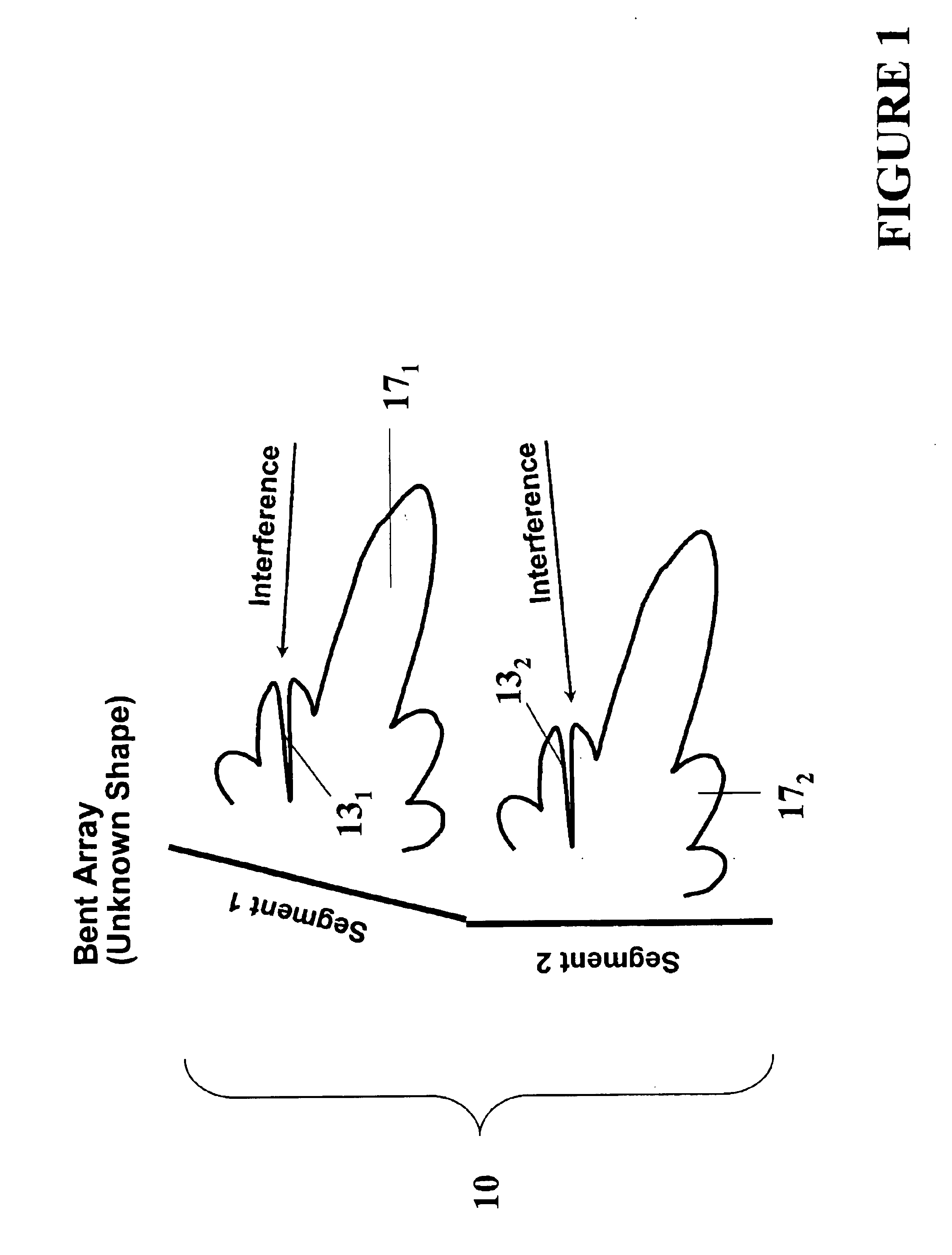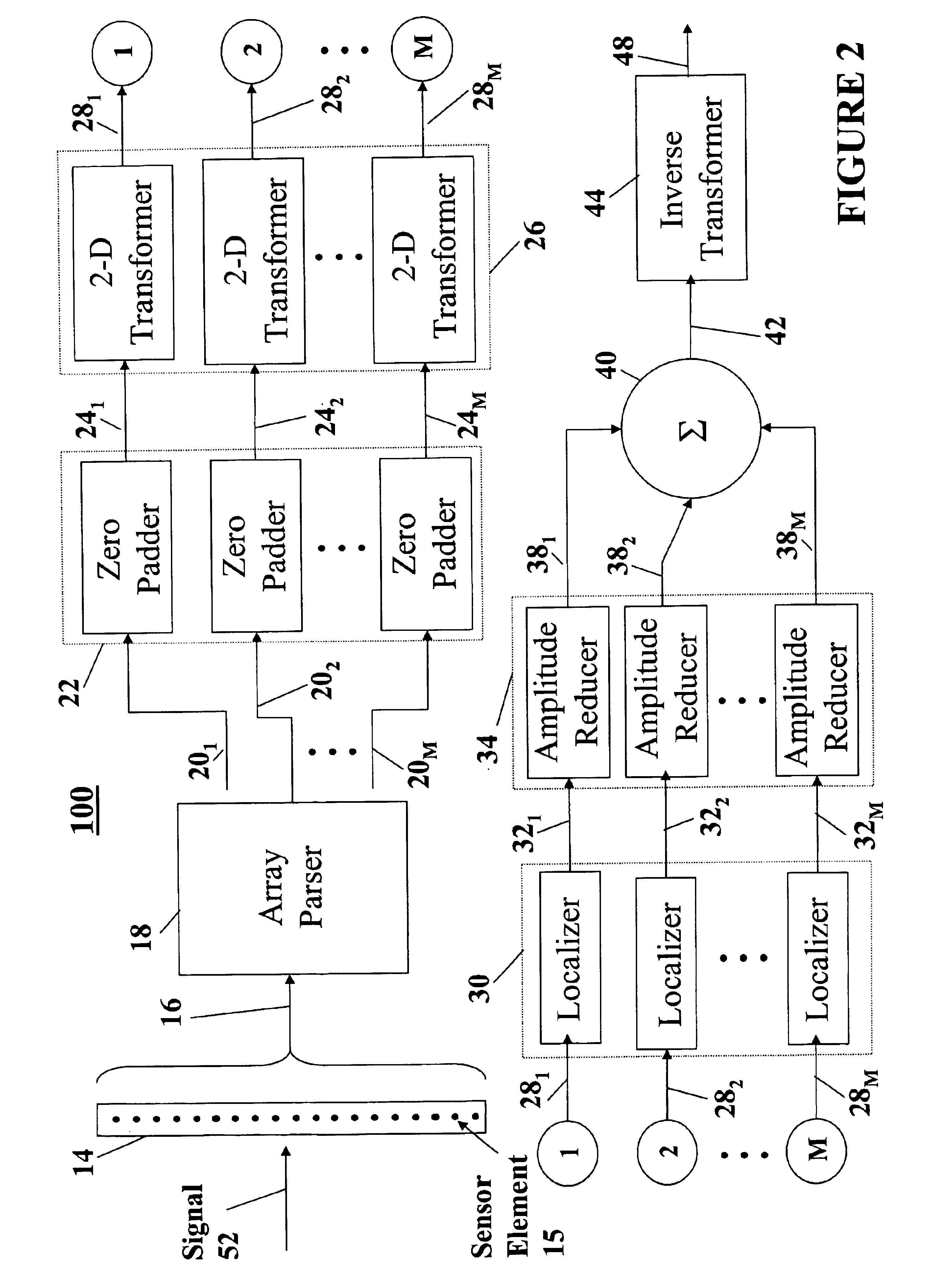Data adaptive interference suppression
a data adaptive and interference suppression technology, applied in the direction of direction/deviation determining electromagnetic systems, instruments, using reradiation, etc., can solve problems such as errors in phase shift estimations and notches that are not steered in the proper direction
- Summary
- Abstract
- Description
- Claims
- Application Information
AI Technical Summary
Benefits of technology
Problems solved by technology
Method used
Image
Examples
Embodiment Construction
As described in more detail herein, signals received by an array of sensor elements are processed to suppress interference contained therein. Referring to FIG. 1, there is shown a linear array 10 having misaligned array segments denoted as segment 1 and segment 2. The relative orientation of segment 1 and segment 2 is unknown. Such an array may comprise a towed array of sonar sensors typically housed in a protective sheath or cable and separated a predetermined distance from one another in a linear fashion. A first end of the cable is coupled to signal processing circuitry at a first node that is typically on board a tow platform, such as a ship. The second end (i.e. “wet end”) of the array cable extends out from the tow platform in to the water medium. As applied to undersea applications, ownship course changes, environmental forces or other factors tend to impact portions of the array such that relative portions or segments of the array become misaligned. In accordance with an emb...
PUM
 Login to View More
Login to View More Abstract
Description
Claims
Application Information
 Login to View More
Login to View More - R&D
- Intellectual Property
- Life Sciences
- Materials
- Tech Scout
- Unparalleled Data Quality
- Higher Quality Content
- 60% Fewer Hallucinations
Browse by: Latest US Patents, China's latest patents, Technical Efficacy Thesaurus, Application Domain, Technology Topic, Popular Technical Reports.
© 2025 PatSnap. All rights reserved.Legal|Privacy policy|Modern Slavery Act Transparency Statement|Sitemap|About US| Contact US: help@patsnap.com



